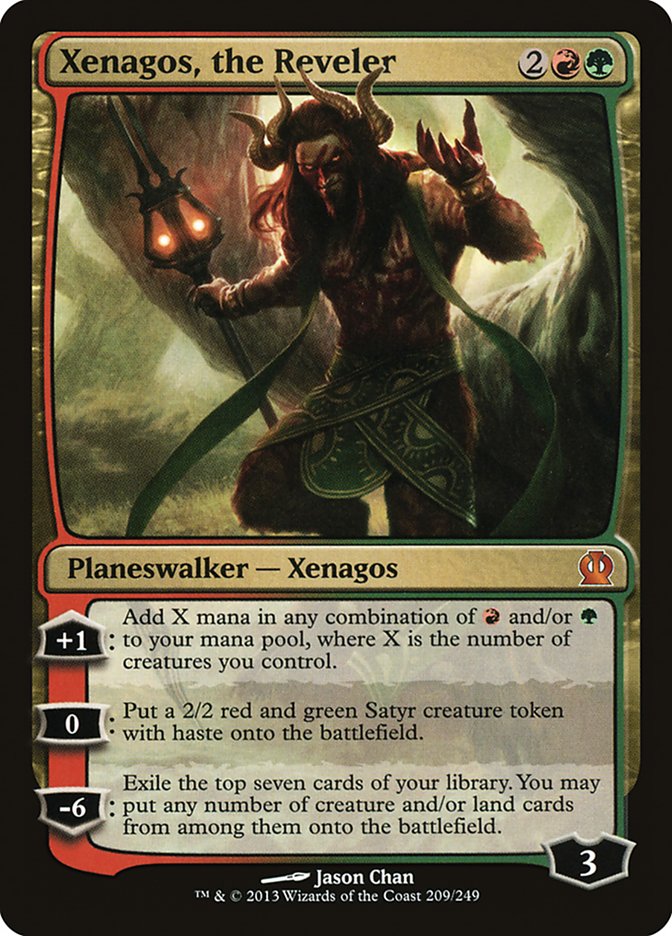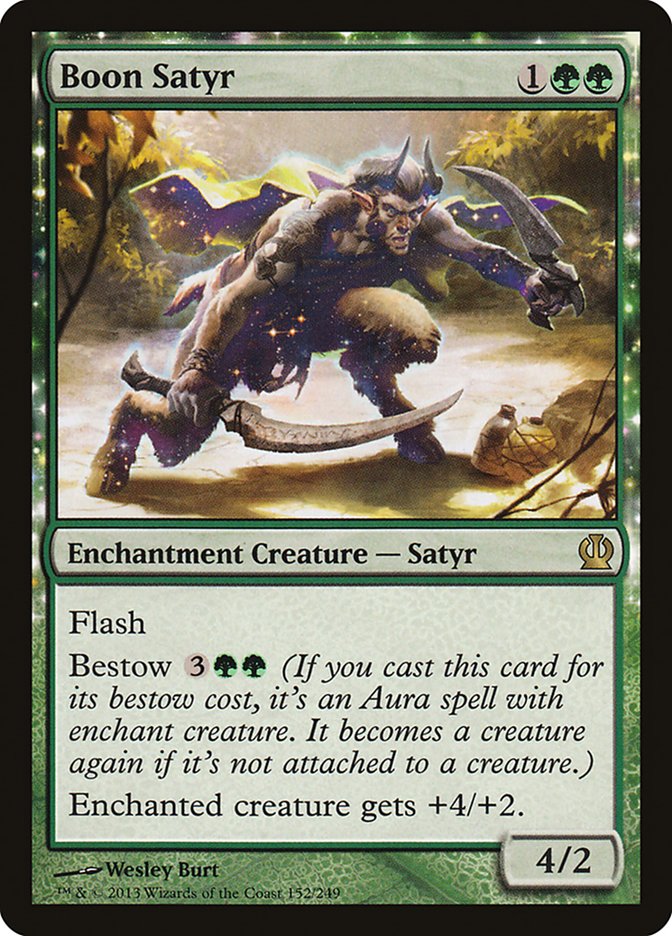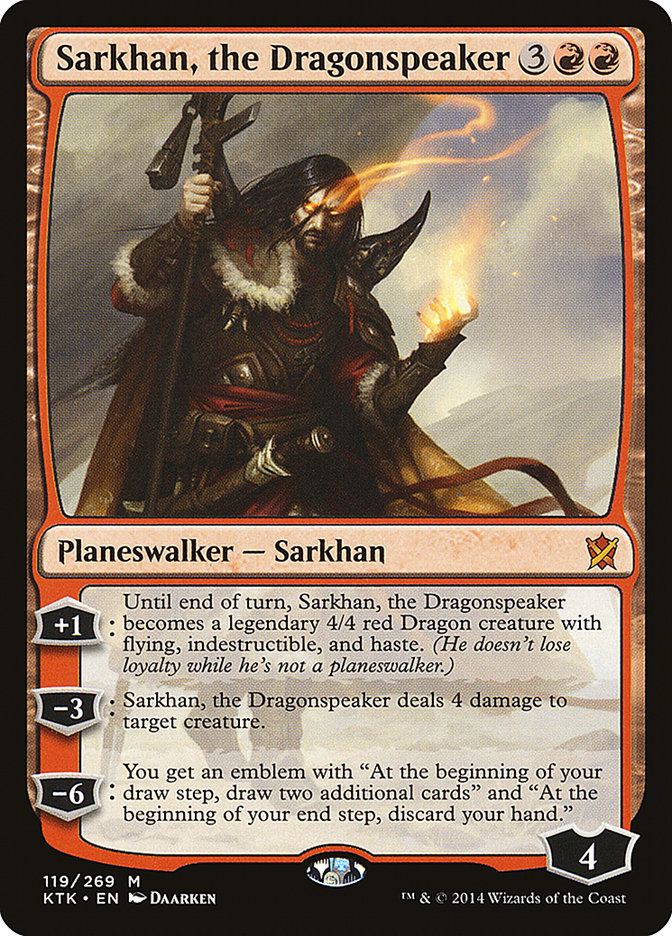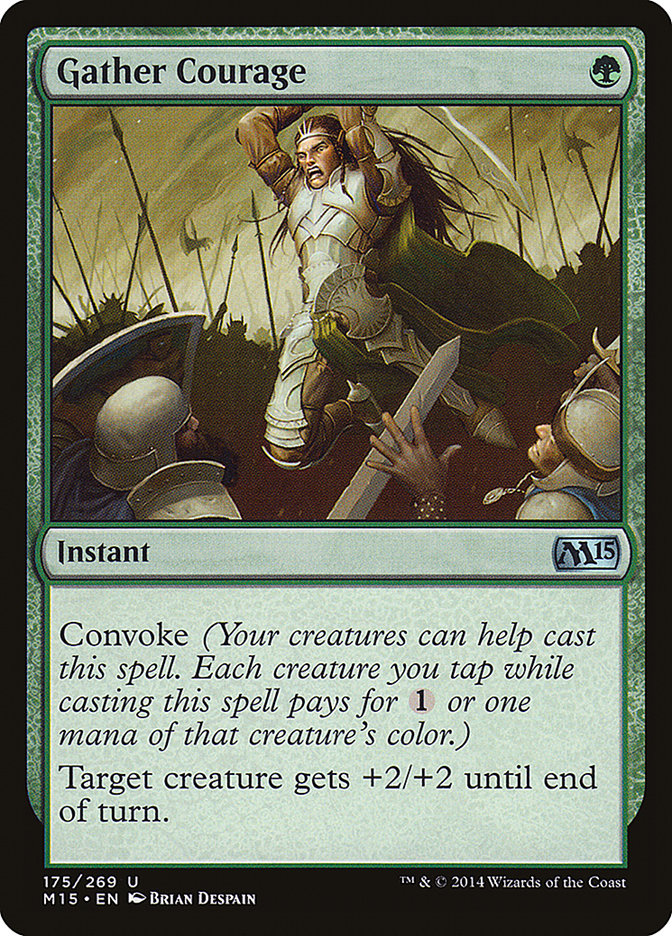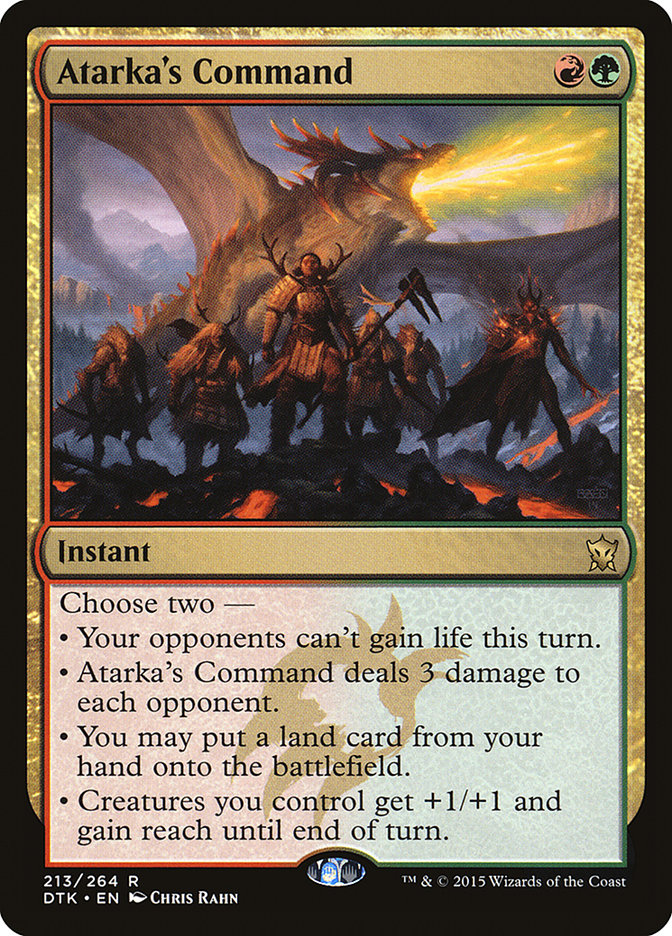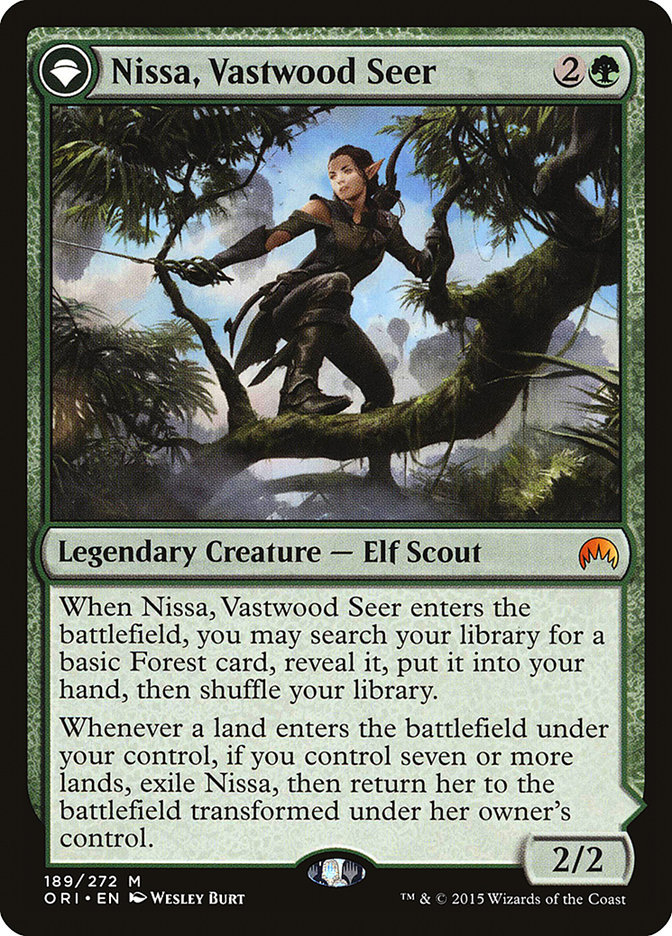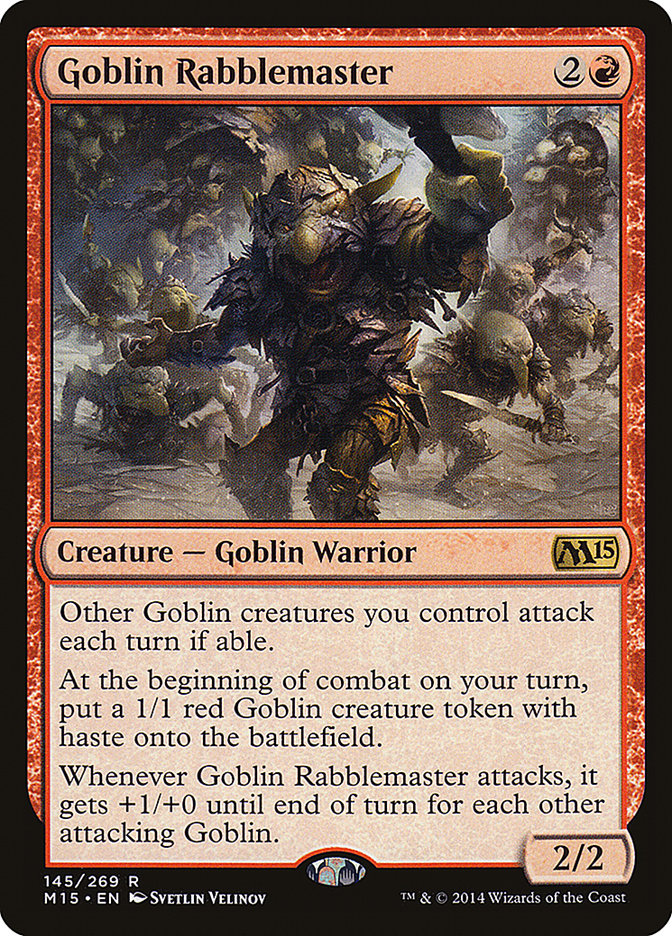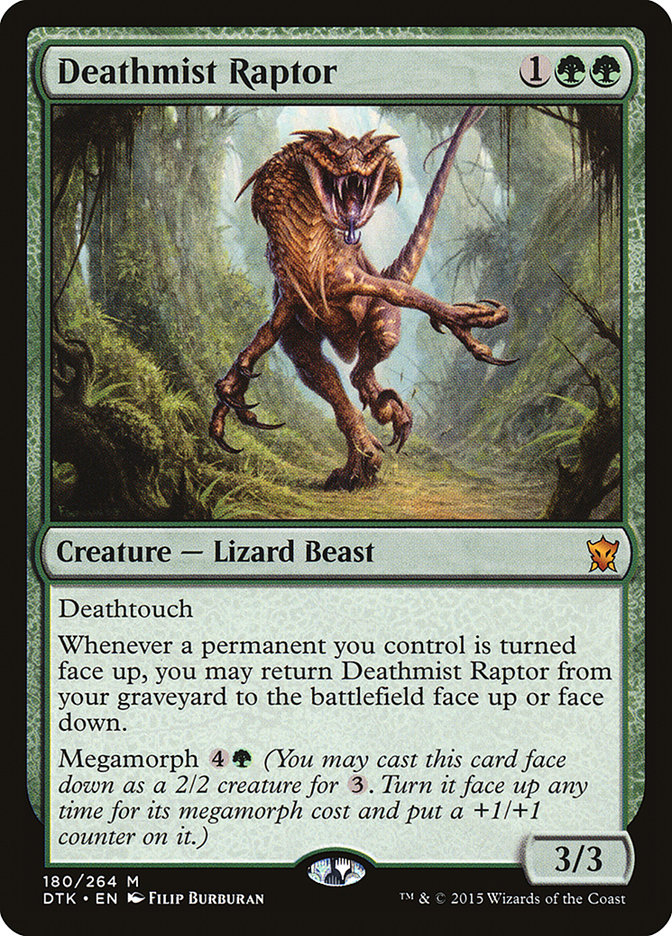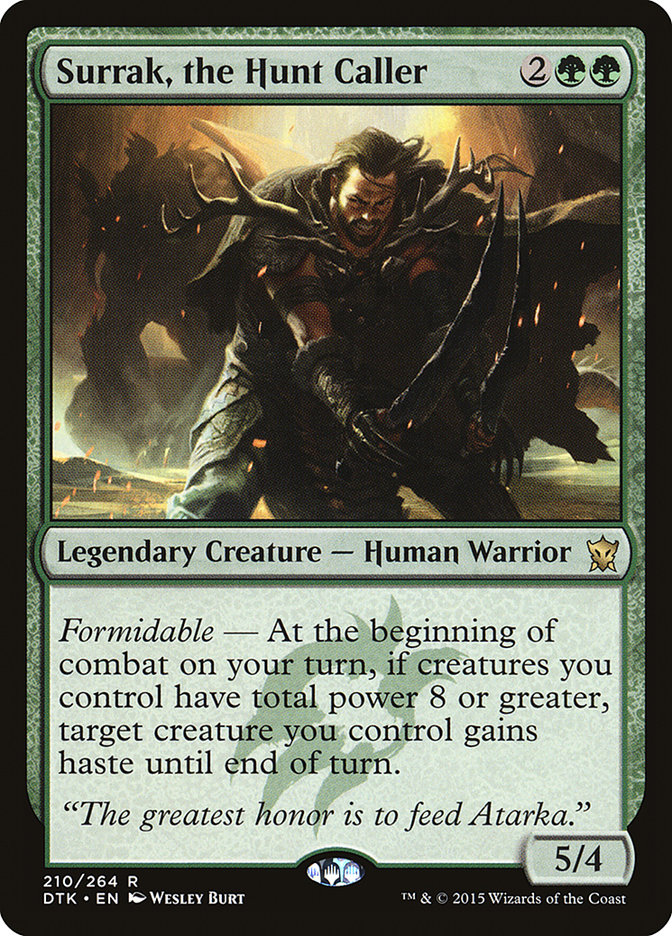We over-exaggerate too much. It’s a fear factor thing I guess.
Something gets really, really hyped up and looks completely miserable to play against, or it appears so powerful without context that it spooks you. I’ve done it with Siege Rhino, I’ve done it with Sphinx’s Revelation, and I’ve done it with Thoughtseize. I would listen to everyone get hyped over everything, and it would cloud my own judgement on how I wanted to approach my deckbuilding. We have a huge tendency to conflate the extremes as if they’re the norm.
Constellation can’t beat Back to Nature. Modern Burn can’t beat a Feed the Clan.
This sequence that requires the perfect six out of seven cards means that deck is broken. This way of thinking stunts growth as a player, and hurts deckbuilding ability. It also hurts others’ evaluations of how cards are played. Yes, you will catch people with your Magical Christmasland decks and hands, but what about the other majority of games where you have to work? Everything isn’t a good matchup, and those bad matchups aren’t just “okay” or “winnable.” If your brew was that good it would be one of the premier decks in the format, so it’s easy to see right through the claims that “This deck has no bad matchups!” and “This deck can win on turn two 50% of the time!” Granted, it’s perfectly understandable why this happens. People turn an idea into form, their preliminary form looks good, and people get excited. When people get excited, they want to sell others on what’s causing their excitement, so we are prone to make things sound better than they actually are. I’m completely guilty of this as well, but trying to change that can be tough when you really want something to be great.
When something looks good, we think too extreme in the best-case scenarios. When something looks bad, we think too extreme in the worst case.
Being honest with yourself is the best way of starting down the path of objectivity, but it also helps you turn your excitement into improvement. Finding a middle ground is huge in development, and will give you better guideline to understand what parts make whatever you’re working on good and what still needs improvement. Be aware that your deck may have a glaring weakness and do what you can do to work on it unless you feel that it’s the week where no one’s going to exploit said weakness. On the flip side, you also need to know where your deck is strong and what you can do to further strengthen it.
One of the things I realized as the days toward release weekend drew closer and closer was that a lot of things were pushing me away from doing what I thought was powerful. One of those cards was Languish, and I figured out that it was pretty grossly overrated in the context of what I was looking to do. I know, my tone has changed a lot since a couple of weeks ago where I shied away from wanting to play my precious 4/4 fliers for four. I kept scrapping decklists, sleeving things up and taking them apart. I assume that a lot of people have done the same. It’s something I’m very prone to doing, and no matter how much effort I put into trying to fix it I seem to find a way to fall into that same trap whenever a set comes out.
In reality, I should be pushing forward and how we can remedy the problem, or asking if the problem is even worth addressing in the first place.
For those wondering, the subject was G/R Dragons.
Creatures (28)
- 4 Elvish Mystic
- 4 Stormbreath Dragon
- 3 Courser of Kruphix
- 4 Rattleclaw Mystic
- 2 Dragonlord Atarka
- 4 Thunderbreak Regent
- 2 Den Protector
- 3 Deathmist Raptor
- 2 Avaricious Dragon
Planeswalkers (2)
Lands (24)
Spells (6)

Languish was the big issue here since, well, it basically killed all of my premier threats, and that sucks. My mistake was immediately dismissing it instead of trying to improve upon it. But that paled in comparison to what I didn’t account for:
It didn’t matter how good Languish was against me.
There were only a very small number of decks that would even play Languish in the first place. Blue-based control, maybe some kind of black control, and perhaps top-heavy Abzan or other green-based midrange decks. Among those, I’d expect blue-based control to be the most likely deck to have this card, and that matchup was already so horrendous that I don’t think it’s worth trying to make big changes just for them. That leaves us with an interesting option – not necessarily in how we approach the spectrum of the archetype (low to the ground aggro versus bigger midrange, etc.) but in how we adjust to what we think is going to happen around the card Languish. Put simply: I should be preparing for others’ reaction to Languish, not my own.
The real problem, and the big deck I would want to react to, is Green Devotion. This has always been a matchup where we are reliant on our fliers, as well as dealing with their big cards without losing momentum. If you start off slow and a Whisperwood Elemental comes down early, you’re in big trouble – more trouble than Languish would ever put you in. But now we have to figure out what Green Devotion is going to do in response to Languish. Chances are good that it won’t be much of anything, mostly because Whisperwood Elemental is already potent against it if set up properly, and the addition of Nissa, Vastwood Seer can be a great rebound.
With all of that knowledge, we branch out even further. How do we think that people are going to react? Will players completely forego four-toughness creatures in hopes of dodging Languish? Will everyone just go super low to the ground? Will more people just play more effects to sidestep it? Will people even do anything at all? The best way to go about this is to try and figure out which cards best advance as many of these questions as possible while also being cohesive to your game-plan. The easiest approaches to me involve others going lower to the ground, or even just not doing much of anything. In short: the more aggressive decks will be more streamlined and aggressive, but not because of Languish. I think that it’ll be our job to continue doing what we do as best as possible, adjusting our deckbuilding and gameplay accordingly to the cards and decks in question. Oftentimes the best way to beat a new card is to just play differently, not make drastic changes that you otherwise wouldn’t make.
Keeping this in mind, these are the cards that I think gain (and regain) stock in Dragons decks are as follows:
I was kind of low on this card because of how embarrassing it is to play against opposing Dragons, Jeskai, aggressive decks, and Den Protector, but the more general your plan becomes, the less you want to worry about specific problems, and the more you want to lean on individual power and flexibility. Xenagos, the Reveler provides quite a bit of both, and allows you to be more top-heavy should you choose to be.
Not only is this card one of the best tools against blue-based control, it’s also a great way to protect yourself against Languish on two fronts. You can flash it in after they commit to it, and you can buff a creature to get out of it. It doesn’t provide much on defense, but it’s another way for the offensive-minded and continue pushing through damage.
Sarkhan sidesteps Languish quite well, and also kills a whole lot of things that are problematic, as well as being pretty powerful in the mirror. The mismatch with Thunderbreak Regent was vastly overblown, but I never understood why people just didn’t attack into it. Regardless, it’s an excellent tool against the things we’re worrying about. While it doesn’t work with Haven of the Spirit Dragon, that’s not too big a deal when we’re dealing with a multipurpose card.
Aaron Barich invitational card is now something I can get myself to consider, as, like the aforementioned, it covers both angles we want to cover while also being the sort of combat trick that allows some aggressive lines to open up. It’s hard to find room for it, mostly because your non-creature spell slots are already occupied heavily by Crater’s Claws, Draconic Roar, and planeswalkers… but if you can find room for it, then it’s certainly a worthy addition.
Along the same line as Gather Courage, this time borrowing a little bit from the aggressive red decks. Atarka’s Command is yet another way for our Dragons to sidestep Languish while also further pushing towards getting those Dragons into play as quickly as possible, and it helps to keep the pace of the game the way you want it. Similar problems arise, as it takes up a spell slot; it is also not being a reliable form of ramp (if you even count it as ramp), but if you build your deck to utilize very small pushes at a bunch of different angles, Atarka’s Command thrives there.
I
There’s a pretty good chance that Nissa is the best card in Origins, but it won’t be playing a primary role in this deck. Instead, it takes a supplementary role as a backup threat in the later game while also continuing your mana development at an affordable cost. Harkening back to the old Innistrad R/G Aggro days, Nissa can easily become one of the best multi-purpose cards in this deck.
As some cards rise in stock others must fall, and these are the cards I wouldn’t touch this week.
Every time I don’t want to play this card, I wind up regretting it because it winds up being awesome. I’m sticking to my guns this time around, and will reinforce this claim with the heavy presence of ground creatures in this format. While you’ll still get free wins here and there solely based off of a turn-two Rabblemaster on the play against a double-Temple draw, those games don’t happen nearly as much as they used to and there are many more ways to interact with it now. The card also gets much worse in game two, not just on the draw, because of the rest of game-plan and what opponents can be expected to do against us. It could be possible to sideboard into Rabblemaster if they see Courser of Kruphix and Dragonlord Atarka, but that’s kind of a stretch to pull off. I’m staying far away from it.
I’m pretty unsure on this one, but the only situation where I’d want this card is when I’m specifically trying to beat Languish and larger ground creatures. It really doesn’t give make our plan any better, and is just a ground creature that sits there and… well… sits there. We can do better for three mana, and putting more of a focus on our Dragons is more important to me.
I was a big, big fan of Nasty Surraksty for the entirety of its legality in Standard, but now, it’s not particularly exciting to want to cast this. It’s too easy to trade with, even if it means they’re trading down. It’s pretty difficult to set up effectively, and, of course, it runs face first into Languish. Its stock does go up if you really want to make Boon Satyr happen, but I think that enough players have adapted to this sequence in real tournaments so you won’t be able to pull this off nearly as often as before.
This is the list I’d play this week:
Creatures (27)
- 4 Elvish Mystic
- 4 Sylvan Caryatid
- 4 Stormbreath Dragon
- 2 Boon Satyr
- 2 Courser of Kruphix
- 2 Dragonlord Atarka
- 4 Thunderbreak Regent
- 2 Den Protector
- 3 Nissa, Vastwood Seer
Planeswalkers (3)
Lands (24)
Spells (6)

I put a lot of emphasis on “this week” because you should always be willing to adjust things every tournament. Just because something works or doesn’t work this week doesn’t mean that the same thing will hold true next week. Additionally, always be willing to consider mindsets that aren’t necessarily yours. There is no such thing as 100% right or wrong, no matter what anyone will try and make you believe. All of us will approach the same thing differently, and while one approach can often be better than another there will always be things you can incorporate from other approaches and mindsets, further refining how you go about deckbuilding and playing.

